Zinnias are among the most cheerful, colorful, and easy-to-grow annual flowers you can plant in your garden. Loved for their daisy-like blooms and wide range of bright hues, zinnias bring bold charm to flower beds, borders, containers, and cutting gardens. One of the best things about zinnias is their relatively low-maintenance nature — but like all plants, they have specific needs when it comes to watering.
If you’ve found yourself wondering, how often should you water a zinnia? — you’re not alone. While zinnias are known for their heat tolerance, they still need the right amount of moisture to thrive, especially during their early growth stages and peak blooming season. In this article, we’ll explore the ideal watering routine for zinnias, how to recognize overwatering and underwatering, and tips to help these vibrant flowers flourish all summer long.
Understanding a Zinnia’s Watering Needs
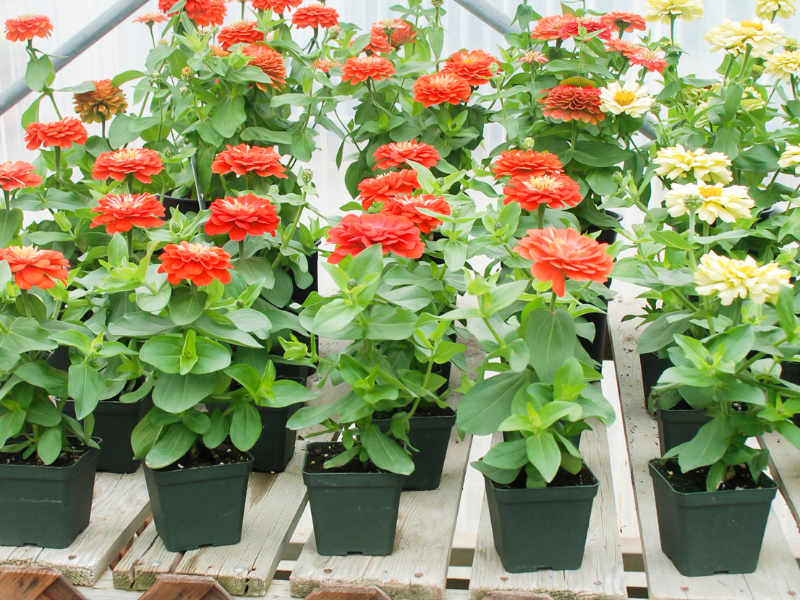
Zinnias (Zinnia elegans) are native to Mexico and the southwestern United States, where they’re accustomed to hot, sunny climates and occasional rainfall. They’re classified as annuals in most regions, completing their life cycle in one growing season. While mature zinnias are relatively drought-tolerant, young plants and those in containers require consistent moisture.
The secret to healthy zinnias is maintaining evenly moist, well-draining soil — never letting it become soggy, nor allowing it to dry out completely for extended periods.
How Often Should You Water a Zinnia?
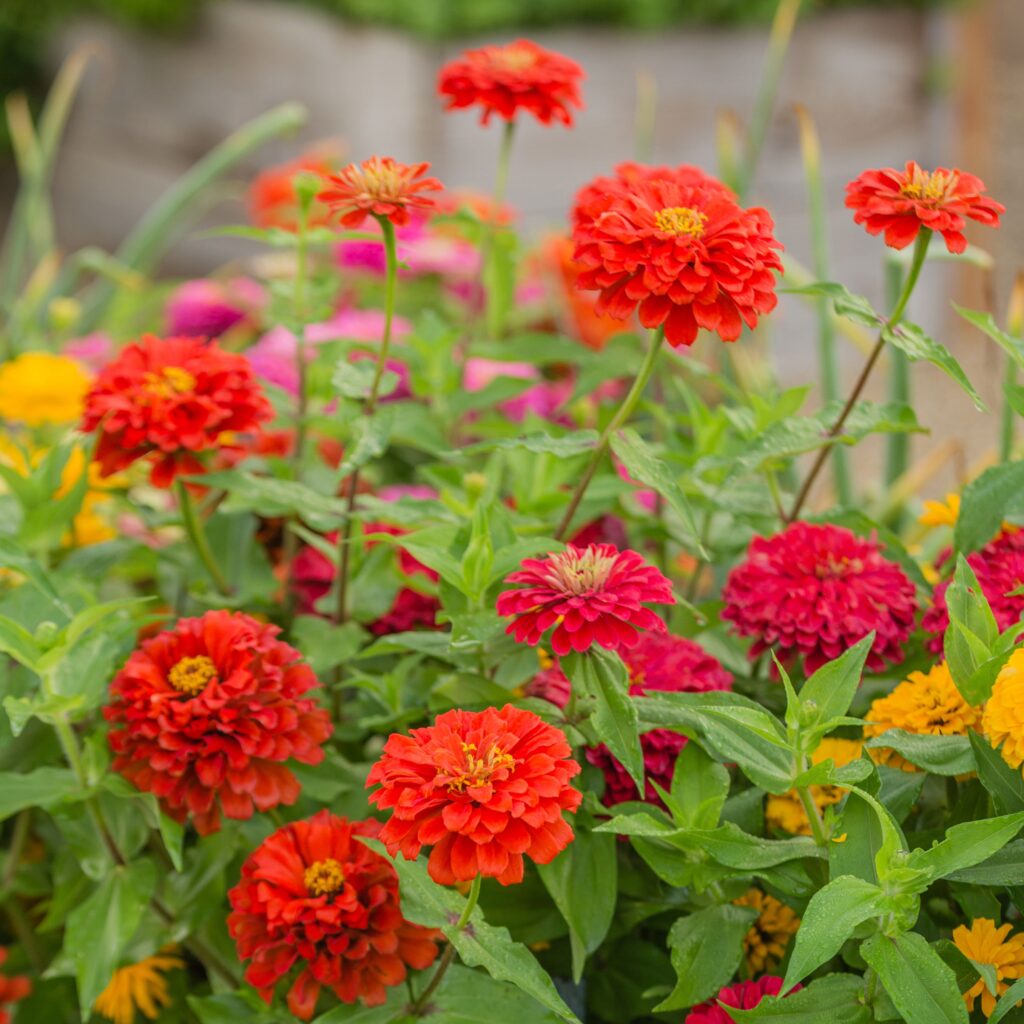
General Watering Guidelines:
- Newly Planted Zinnia Seeds or Seedlings: Water daily until they’re well-established.
- Established In-Ground Zinnias: Water every 2–3 days during hot, dry weather and once a week in cooler or rainy conditions.
- Potted Zinnias: Water every 1–2 days in warm weather and daily during heatwaves.
Golden Rule: Always water when the top 1–2 inches of soil feel dry to the touch.
Seasonal Watering Schedule for Zinnias
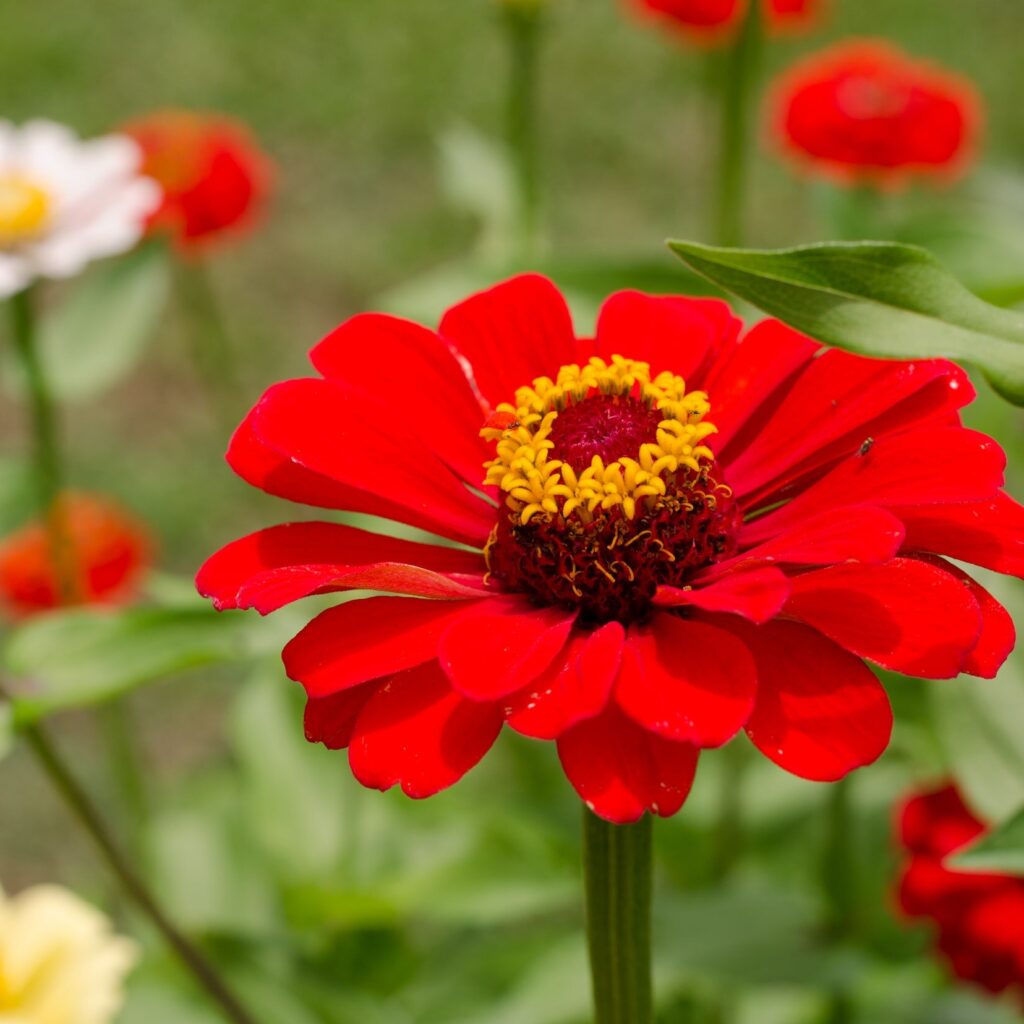
Spring (Planting and Early Growth)
Zinnias are typically planted in late spring once the threat of frost has passed and soil temperatures reach 60°F (16°C) or higher.
- Seeds and Seedlings: Water lightly but frequently — usually daily or every other day — to keep the top inch of soil consistently moist.
- Be cautious not to waterlog the soil, which can cause seeds to rot before germination.
Summer (Active Growth and Peak Blooming)
Summer is the busiest time for zinnias, as they grow rapidly and produce continuous waves of flowers.
- In-Ground Zinnias: Water every 2–3 days, adjusting to once a day during very hot or windy weather.
- Container Zinnias: Water every day or twice a day in extreme heat. Containers dry out much faster than garden beds.
Tip: Water early in the morning so foliage has time to dry, reducing the risk of powdery mildew and other fungal diseases.
Autumn (Late Blooming and Decline)
As temperatures cool and zinnias slow their growth:
- Reduce watering to once or twice a week.
- If rain is consistent, you may not need to water at all.
Winter
Zinnias are annuals and will naturally die off with the first frost. No watering is necessary in winter.
Factors That Affect Zinnia Watering Frequency
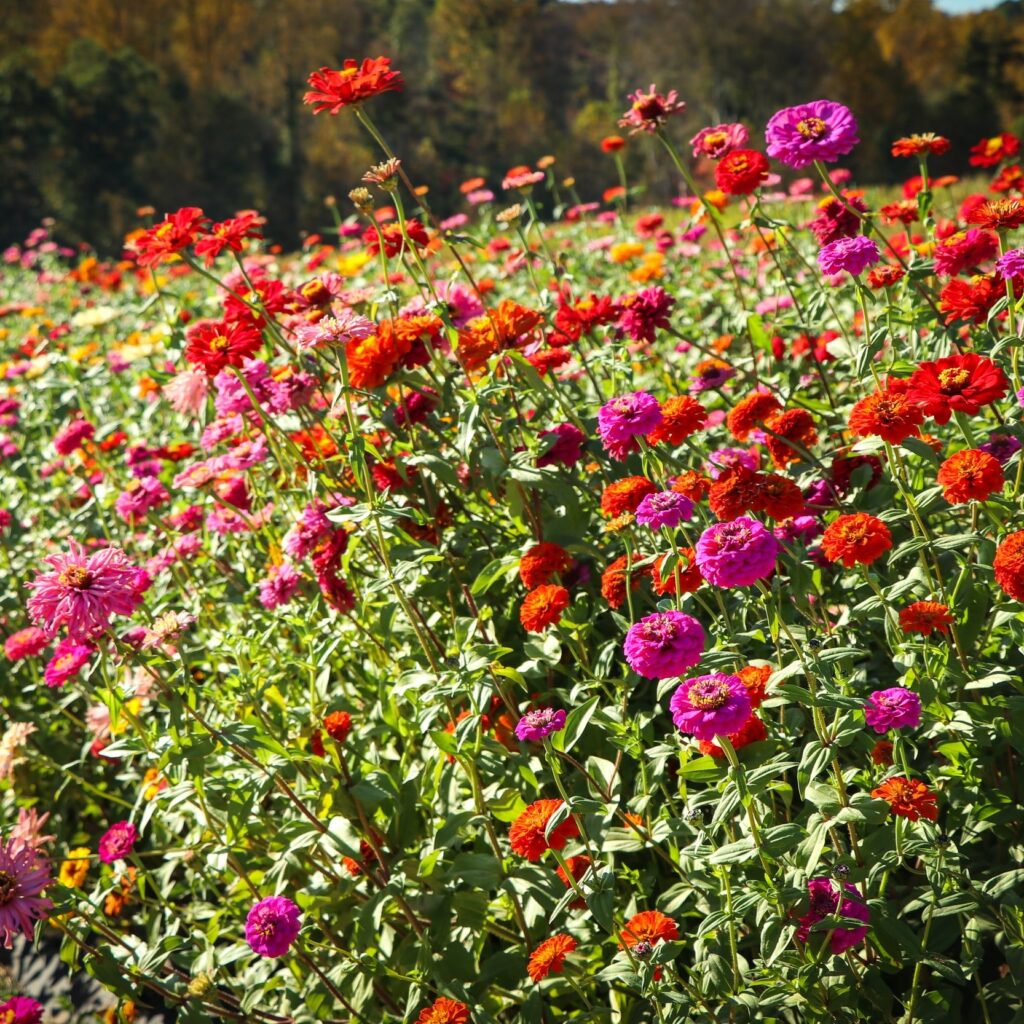
Several environmental and plant-specific factors can influence how often you should water your zinnias:
Climate and Weather
- Hot, dry, and windy conditions: Increase evaporation and require more frequent watering.
- Cool, rainy, or humid weather: Reduce the need for supplemental watering.
Soil Type
- Sandy soil: Drains quickly and dries out faster, needing more frequent watering.
- Clay soil: Retains moisture longer but can become compacted or waterlogged.
- Loamy soil: Ideal for zinnias, offering balanced moisture retention and drainage.
Plant Maturity
- Young seedlings: Have shallow root systems and need frequent, shallow watering.
- Mature plants: Tolerate short dry spells and prefer deep, less frequent watering.
Container Size and Material
- Small pots and terracotta containers dry out quickly.
- Larger or glazed ceramic containers retain moisture longer.
How to Properly Water a Zinnia
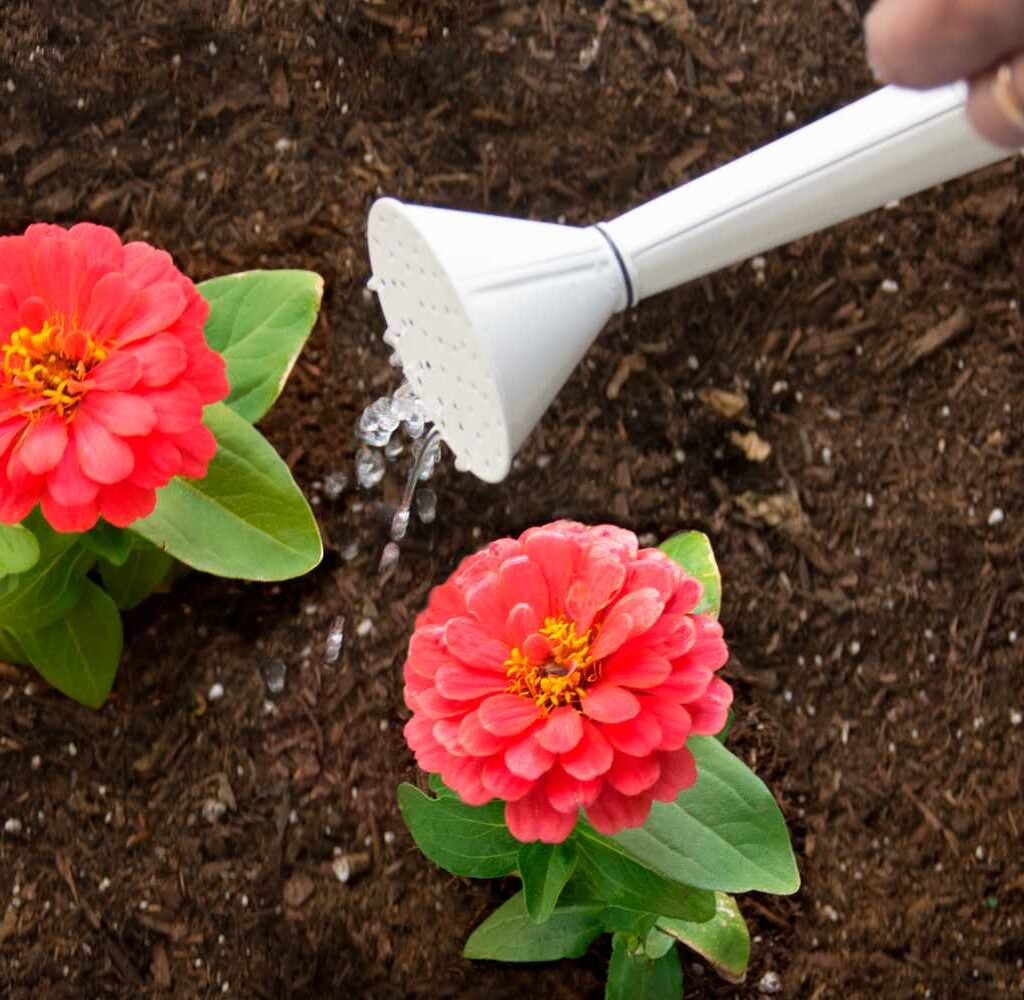
Water Deeply and Evenly
For in-ground zinnias, water thoroughly until the soil is moistened to a depth of 6–8 inches. For potted zinnias, water until it begins to drain from the bottom of the container.
Check Soil Moisture Before Watering
Use your finger to test the top 1–2 inches of soil. If it feels dry, it’s time to water.
Water at the Base
Avoid overhead watering, which can increase the risk of powdery mildew on leaves. Always water directly at the soil level.
Use Mulch for In-Ground Plants
A 1–2 inch layer of organic mulch (like straw or shredded bark) around zinnias helps retain soil moisture, suppress weeds, and keep roots cool.
Signs of Overwatering and Underwatering in Zinnias
Being able to recognize early signs of watering issues can help you adjust your care routine promptly.
Signs of Overwatering:
- Yellowing, wilting leaves despite moist soil
- Soft, mushy stems or roots
- Fungal diseases like powdery mildew
- Poor flowering
Solution: Improve soil drainage, reduce watering frequency, and remove affected plant parts.
Signs of Underwatering:
- Wilting or drooping leaves, especially midday
- Dry, brittle leaves
- Stunted growth
- Fewer blooms
Solution: Water more deeply and frequently, especially during heatwaves or dry spells.
Special Watering Tips for Potted Zinnias
Container-grown zinnias need extra attention because their limited soil dries out quickly:
- Use a well-draining potting mix.
- Ensure pots have adequate drainage holes.
- In hot weather, check soil moisture twice a day.
- Water early morning and, if needed, again in the late afternoon during peak heat.
Additional Zinnia Care Tips
To keep your zinnias blooming abundantly alongside good watering habits:
Provide Full Sun
Zinnias love at least 6–8 hours of direct sunlight daily for best flowering.
Deadhead Regularly
Remove spent blooms to encourage continuous blooming throughout the season.
Fertilize Lightly
Feed zinnias every 4–6 weeks with a balanced, water-soluble fertilizer to support vigorous growth and flowering.
Monitor for Pests
Aphids and spider mites can be an issue in dry, stressed plants. Inspect regularly and treat with neem oil or insecticidal soap as needed.
Conclusion
So, how often should you water a zinnia?
It depends on your climate, soil type, plant maturity, and whether they’re in the ground or a container:
- Newly planted seeds or seedlings: Water daily.
- Established in-ground zinnias: Water every 2–3 days, more frequently during hot or dry weather.
- Potted zinnias: Water daily in warm weather and check soil moisture regularly.
The key is to keep soil evenly moist but never soggy, adjusting your routine based on weather conditions and the plant’s growth stage. With consistent, attentive watering and a few basic care practices, your zinnias will reward you with brilliant, long-lasting blooms from summer into fall.
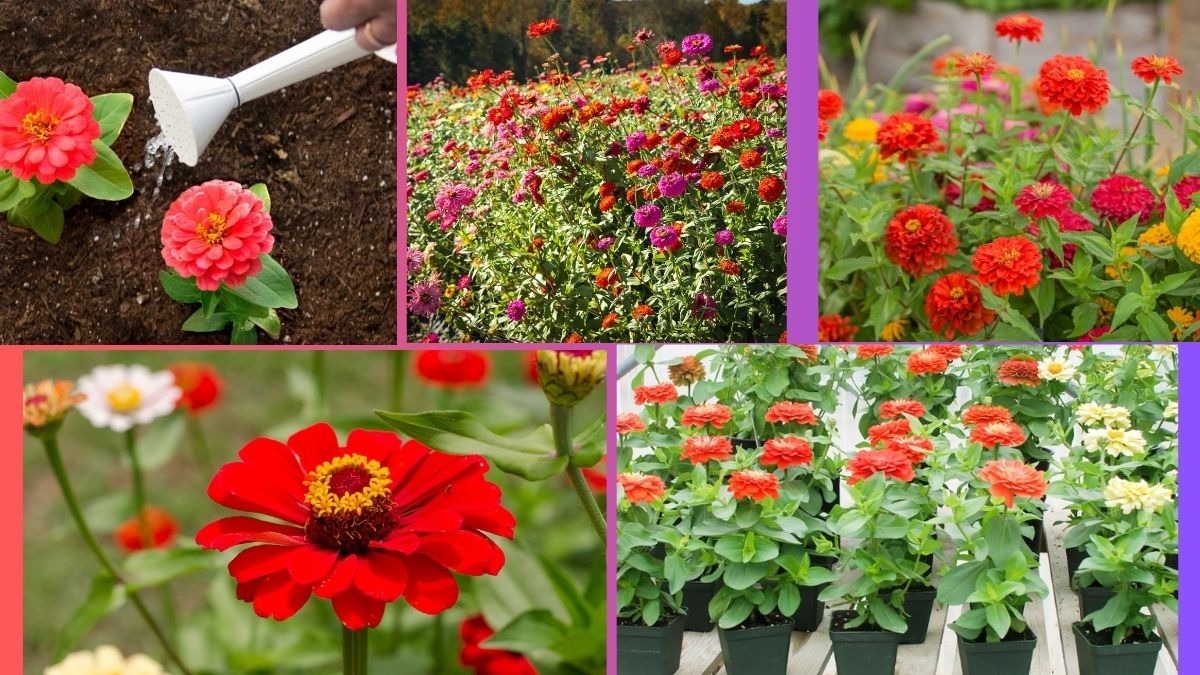



Leave A Comment